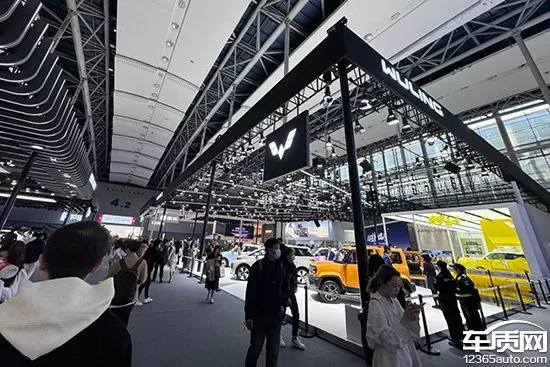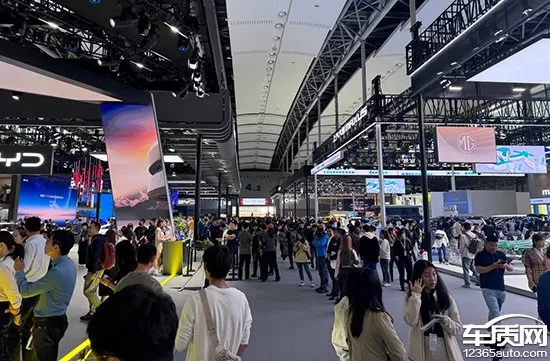Recently, the Ministry of Industry and Information Technology, the Ministry of Finance, and the State Administration of Taxation issued the “Announcement on Adjusting the Technical Requirements for Vehicle Purchase Tax Exemption for New Energy Vehicles”. This is the first major adjustment to the new energy vehicle purchase tax policy in nearly six years. With the continuous expansion of the domestic new energy vehicle market, it is easy to see that the preferential purchase tax policy is accelerating its “rollback” in conjunction with the announcement issued in June on “Continuing and Optimizing the Tax Exemption Policy for New Energy Vehicles”. The country’s support for new energy vehicles at the policy level is nearing its end. What new requirements are proposed in the “Technical Requirements Announcement”?

According to the “Technical Requirements Announcement,” the most pressing issue is the current tax exemption policy for the range and energy density of pure electric vehicles. The current policy requires a range of at least 100km, but the new requirement is at least 200km. The energy density of the power battery system has also been increased from 95Wh/kg to 125Wh/kg. In 2022, only 12.6% of the domestic pure electric vehicles have a range of less than 200km. The majority of the mainstream pure electric vehicles have a power battery system energy density of 120-180 Wh/kg. Overall, the adjustment of the technical requirements is not too strict and will not have a big impact on most pure electric vehicles. Furthermore, the requirements for the battery swapping mode models have been clarified. According to the “Technical Requirements Announcement,” the relevant models must comply with the GB/T 40032 “Electric Vehicle Battery Swapping Safety Requirements” standard. In recent years, the country has introduced multiple policies to support the battery swapping mode. At the National Industrial and Information Technology Work Conference on December 21, it was emphasized once again to support the development of the new energy vehicle battery swapping mode by 2024. With more and more companies entering the battery swapping market, the market size of battery swapping models is expected to rapidly increase in the future. The release of the “Technical Requirements Announcement” has regulated the development direction of the battery swapping mode vehicles at the policy level, aiming to ensure that the battery swapping mode vehicles can truly swap batteries and be used. In addition, the “Technical Requirements Announcement” has added new requirements for low-temperature range attenuation technology indicators. For pure electric passenger cars tested according to Appendix A of GB/T 18386.1 “Electric Vehicle Energy Consumption and Range Test Method Part 1: Light Vehicle,” if the low-temperature range attenuation rate does not exceed 35%, the energy density of the battery system can be relaxed to 95Wh/kg, and the range requirement for pure electric passenger cars can be relaxed to 120km. According to the “Technical Requirements Announcement,” from January 1, 2024, the models applying to enter the “Catalog of New Energy Vehicle Models Eligible for Vehicle Purchase Tax Exemption” must meet the technical requirements for new energy vehicle products. For models entered into the “Catalog of New Energy Vehicle Models Eligible for Vehicle Purchase Tax Exemption” before December 31, 2023, if they do not meet the latest policy requirements, they can still enjoy the tax exemption benefits from January 1, 2024, to May 31, 2024. During this transition period, car manufacturers need to upgrade the technology of models that do not meet the requirements and submit additional materials, including tax exemption labels and battery swapping mode labels. What new changes will the “Technical Requirements Announcement” bring?

At present, the new energy vehicle industry is experiencing rapid development. The timely release of the “Technical Requirements Announcement” is a sign of keeping up with the times. It provides technical guidance for the development of new energy vehicles, considering the current status of domestic new energy vehicle technology. The release of this announcement may have a significant impact on the existing pattern of the new energy vehicle market. The impact on car companies is mainly twofold. For companies whose existing products do not meet the requirements of the “Technical Requirements Announcement,” there is an urgent need to upgrade and optimize their products. This is especially true for car companies with pure electric micro-cars as their main models, such as the Hongguang MINIEV and Geely Panda. If these companies do not upgrade their technology in a timely manner, they will not be able to enjoy the tax exemption policy after May 31, 2024. This will undoubtedly have a huge impact on the future market performance of these models. From another perspective, the release of the “Technical Requirements Announcement” may be a policy measure taken by the country to gradually phase out these “elderly joy” micro-cars. On the other hand, for car companies whose products meet the requirements, under the guidance of the policy of reducing purchase tax, they will not only optimize the positioning of new car models, but also consider introducing different new energy technologies, such as plug-in hybrid, extended range and battery exchange modes. Among these, the battery exchange mode may be more sought after by more car companies. NIO has already cooperated with Geely and Changan, two leading independent companies, in the battery exchange mode, forming a “battery exchange alliance” through complementary advantages. In the future, it may attract more car companies to join. The most important reason is that the country’s support for the battery exchange mode at the policy level has always been very clear. In addition, the “Technical Requirements Announcement” has put forward technical requirements for battery exchange mode vehicles, and this track may usher in a booming development in the future. On the consumer end, the various technical indicators of new energy vehicles mentioned in the “Technical Requirements Announcement” also to some extent popularize the technology of new energy vehicles to consumers, deepen their understanding of new energy vehicle products, and take a more rational approach to viewing and purchasing. In addition, as the “Technical Requirements Announcement” has raised the technical threshold for new energy vehicles, coupled with the tightening of the purchase tax exemption policy, it is highly likely to stimulate car companies to lower the prices of new energy vehicle models, whether it will trigger a new round of price competition is still uncertain, but it will ultimately bring benefits to consumers purchasing new energy vehicle models.

Since September 2014, the new energy vehicle purchase tax exemption policy has been implemented. There have been four extensions in 2017, 2021, 2022, and 2023. During this period, the domestic new energy vehicle market has undergone earth-shaking changes. According to the latest data from the China Passenger Car Association, the cumulative sales of new energy vehicles in China from January to November 2023 has exceeded 7 million, a 95-fold increase from 2014. However, in terms of product technology requirements for the tax exemption policy, there has been no systematic adjustment for six years. In fact, during these six years, China’s new energy vehicle technology has made tremendous breakthroughs and shown a leading global momentum, developing overall in a favorable direction. Therefore, making policy adjustments at the time of the four-year tax policy extension undoubtedly has profound significance. Firstly, the importance of technological progress and model innovation for the development of new energy vehicles has been clearly stated. On the one hand, new technologies and models such as low-temperature attenuation and battery swapping are supported to promote continuous technological progress and model innovation of new energy vehicles. On the other hand, the standards for existing mature new energy vehicle technologies are moderately increased, pressuring companies to eliminate backward production capacity, increase technological innovation, and thereby enhance industry development concentration, accelerating the formation of a high-quality competitive landscape. Cui Dongshu, the secretary-general of the China Passenger Car Association, stated in a post on his personal WeChat public account that the “Technical Requirements Announcement” clearly specifies the technical indicators and transition period for the application of the new energy vehicle purchase tax exemption policy after 2024, and the adjustment is quite favorable for the high-quality development of the industry. Secondly, stabilize and expand the consumption of new energy vehicles. According to the “Technical Requirements Notice”, about 10% of the current new energy vehicle models in the market do not meet the requirements. The majority of new energy vehicle models can continue to enjoy the purchase tax exemption policy, which provides reassurance to potential consumers. The release of the “Technical Requirements Notice” clearly sets the threshold for the technical requirements of new energy vehicles in the near future, allowing many car companies to launch new products and marketing strategies, and promoting the expansion of the new energy vehicle market. In addition, according to the “Purchase Tax Exemption Notice” released in June, the purchase tax exemption policy for new energy vehicles from 2024 to 2025 has a limit of 30,000 yuan (4200$), and the policy of halving the collection will begin in 2026-2027. With the release of the “Technical Requirements Notice”, the threshold for new energy vehicles is increasing at all levels, indicating that the process of “declining” the purchase tax exemption policy for new energy vehicles may accelerate further, and it is not ruled out that it may be completely withdrawn by 2028. In the future, as non-market factors such as policy are gradually eliminated, new energy vehicles will eventually stand on the same starting line as fuel vehicles, forcing new energy vehicle companies to make market strategy adjustments to maintain a competitive advantage. For new energy vehicles, future development will shift from “policy-driven” to “market-driven”, achieving survival of the fittest through market competition. In summary, under the dual influence of internal and external factors, the purchase tax exemption policy will not make a “sharp turn”, but the trend of market-oriented and independent development of the new energy vehicle industry is inevitable. The release of the “Technical Requirements Announcement” signals the accelerated decline of the purchase tax exemption policy, and also serves as a warning to car companies. If technological innovation and product iteration cannot keep up with the market pace, they will face brutal elimination, regardless of the policy.